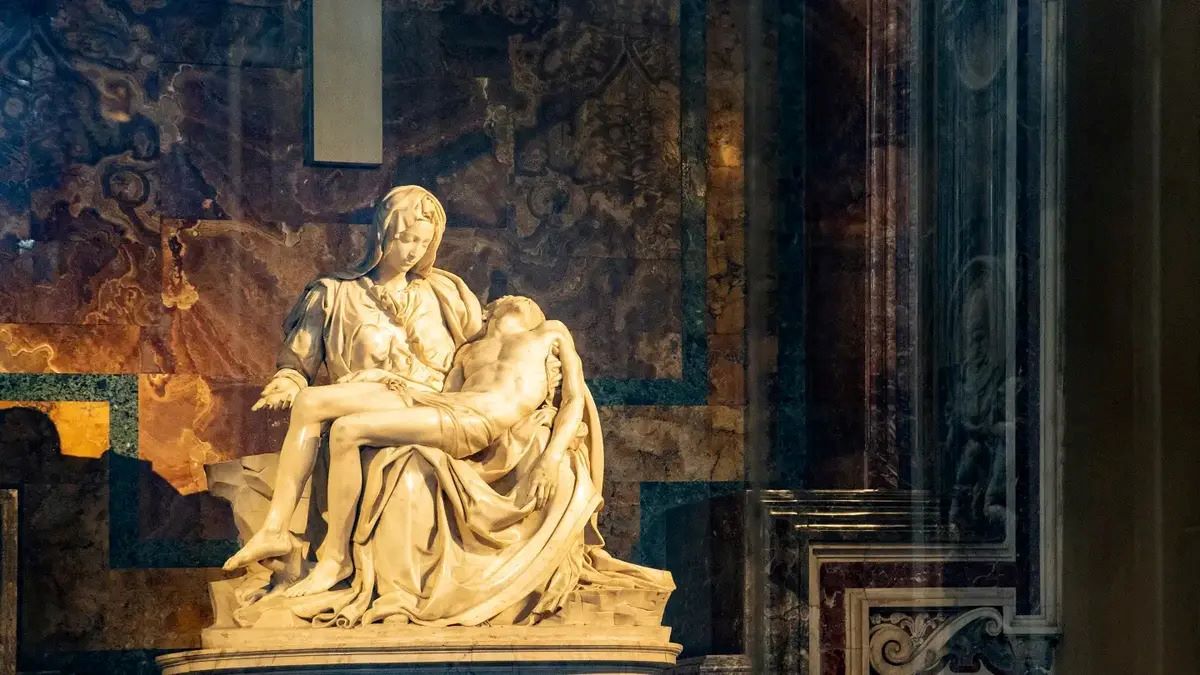Hidden Gems Of Michelangelo’s Masterpieces You Should Know

Michelangelo, one of history's greatest artists, left behind numerous masterpieces that continue to captivate art lovers. While many people know about the Sistine Chapel and David, several lesser-known works deserve attention. These hidden gems showcase his incredible talent and offer a deeper understanding of his artistic journey. From intricate sculptures to stunning frescoes, each piece tells a unique story. Exploring these works can provide a fresh perspective on Michelangelo's genius. Whether you're an art enthusiast or just curious, discovering these hidden treasures will enrich your appreciation for his contributions to the art world. Ready to uncover the secrets behind Michelangelo's lesser-known masterpieces? Let's dive in!
Michelangelo's Masterpieces Beyond the Famous
Michelangelo, a name synonymous with Renaissance art, created many masterpieces. While the Sistine Chapel and David are well-known, several lesser-known works deserve attention. Let's uncover these hidden gems.
The Laurentian Library
The Laurentian Library in Florence showcases Michelangelo's architectural genius. Designed to house the Medici family's collection, it features a stunning staircase and intricate details.
- Vestibule: The vestibule's staircase, often called the "staircase of knowledge," is a marvel of design. Its flowing steps seem almost organic.
- Reading Room: The reading room's ceiling and windows reflect Michelangelo's mastery of space and light.
The Medici Chapel
Located in the Basilica of San Lorenzo, the Medici Chapel is a testament to Michelangelo's sculptural prowess. It serves as a mausoleum for the Medici family.
- Tomb of Lorenzo de' Medici: This tomb features the statues of Dawn and Dusk, symbolizing the passage of time.
- Tomb of Giuliano de' Medici: Adorned with the statues of Night and Day, this tomb showcases Michelangelo's ability to convey emotion through stone.
The Risen Christ
The Risen Christ, also known as Cristo della Minerva, is a lesser-known sculpture located in the church of Santa Maria sopra Minerva in Rome.
- First Version: Michelangelo initially sculpted a version that was flawed due to a black vein in the marble. This version is now in the church of San Vincenzo Martire in Bassano Romano.
- Second Version: The final version, completed in 1521, depicts Christ holding the cross, showcasing Michelangelo's skill in creating lifelike human forms.
The Bruges Madonna
The Bruges Madonna, housed in the Church of Our Lady in Bruges, Belgium, is one of Michelangelo's few sculptures to leave Italy during his lifetime.
- Madonna and Child: This sculpture captures a tender moment between Mary and Jesus, with intricate details that highlight Michelangelo's talent.
- Symbolism: The Madonna's serene expression and the child's dynamic pose symbolize the dual nature of Christ as both human and divine.
The Doni Tondo
The Doni Tondo, also known as The Holy Family, is a circular painting located in the Uffizi Gallery in Florence. It is one of Michelangelo's rare forays into painting.
- Composition: The painting's circular format and vibrant colors make it unique among Michelangelo's works.
- Figures: The depiction of the Holy Family, with their muscular forms and dynamic poses, reflects Michelangelo's sculptural background.
The Bacchus
The Bacchus, housed in the Bargello Museum in Florence, is one of Michelangelo's early works. It depicts the Roman god of wine in a drunken state.
- Realism: The sculpture's lifelike details, such as Bacchus's relaxed posture and the satyr's mischievous grin, showcase Michelangelo's ability to capture human emotion.
- Symbolism: Bacchus's drunkenness symbolizes the dual nature of wine as both a source of joy and a potential vice.
The Moses
The Moses, part of the tomb of Pope Julius II in San Pietro in Vincoli, Rome, is a powerful sculpture that captures the biblical figure in a moment of contemplation.
- Expression: Moses's intense gaze and muscular form convey a sense of strength and determination.
- Horns: The sculpture features small horns on Moses's head, a detail based on a mistranslation of the Bible that Michelangelo incorporated into his work.
The Pietà Rondanini
The Pietà Rondanini, Michelangelo's final sculpture, is housed in the Castello Sforzesco in Milan. It represents a departure from his earlier, more polished works.
- Unfinished State: The sculpture's unfinished appearance gives it a raw, emotional quality that reflects Michelangelo's own struggles in his later years.
- Composition: The elongated forms of Mary and Jesus create a sense of sorrow and longing, making this Pietà a poignant conclusion to Michelangelo's career.
Discovering Michelangelo's Lesser-Known Works
Michelangelo's hidden gems offer a fresh perspective on his genius. Beyond the famous Sistine Chapel and David, these lesser-known pieces reveal his versatility and depth. Works like the Medici Chapel sculptures and the unfinished San Lorenzo facade showcase his skill in different mediums. The Doni Tondo painting highlights his talent with color and composition. Exploring these pieces provides a fuller understanding of his artistic journey. Each work, whether a sculpture, painting, or architectural design, adds to the rich tapestry of his legacy. Visiting these masterpieces, often overlooked by tourists, can be a rewarding experience. They offer a quieter, more intimate connection to the artist. Next time you admire Michelangelo, remember these hidden treasures. They are a testament to his enduring impact on the world of art.

